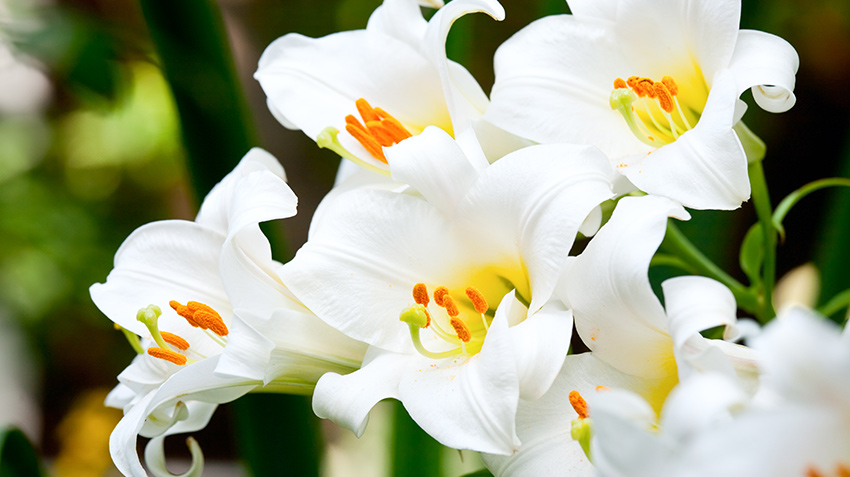
The loss of a loved one is a time that’s characterized by a combination of emotions.
During this time, offering the deceased a meaningful service allows loved ones to convey their sentiments and pay their respects.
For a long time, flowers have played an integral role in this tradition. Funeral floral arrangements are our way of expressing love for those we lost, coping with our grief, or supporting someone through their grieving process.
Here’s a look into the different types of traditional funeral flowers you can choose, and the symbolic meaning they add to a service.
White lilies
White lilies represent the peace and purity of the soul and are the most commonly used flowers in funerals.
In more religious services, the white lily is also used as a symbol of renewal and rebirth.
Gladioli
Gladiolus is another common choice among traditional funeral flowers.
They signify strength and integrity and are used to celebrate the life and deeds of the deceased. Including gladioli in your floral arrangement allows you to honor the loss of an inspirational personality.
Roses
Similar to lilies and gladioli, roses are a frequent sight at funeral services.
Different colors of roses express different meanings, allowing you to communicate unique messages to your loved ones.
The white rose symbolizes purity and innocence. The yellow rose symbolizes friendship, dark pink is a symbol of gratitude, and red stands for love.
Orchids
Orchids are a popular choice for funeral floral arrangements and can be used to express love and affection for the deceased.
As a flower that is known to not wilt easily, orchids are often deemed a suitable choice to signal everlasting love.
Carnations
Funeral wreaths and standing sprays often include carnations as they have a love language of their own.
Red carnations, for example, represent admiration towards the person lost and can be used to express appreciation for a well-respected character.
Pink carnations, on the other hand, represent remembrance and can be used as a way to celebrate the memories you shared. White carnations have a meaning similar to white lilies; they represent pure love and innocence.
Forget-me-nots
Forget-me-nots come with more than one emotional meaning, making them one of the most meaningful flowers that can be used to communicate a multitude of feelings during times of heightened emotions.
As their name suggests, they signify connections that stand the test of time. Forget-me-nots also represent undying love and celebrate the time you spent with your loved ones.
Violets
Like forget-me-nots, violets are flowers that are traditionally used to convey your emotions towards loved ones of a specific age.
Particularly, if you or someone you know loses a loved one unexpectedly and at a young age, violets are the right choice of flowers.
Literature alludes to violets as a symbol of someone who passed away too soon, as well as delicacy and modesty.
Hyacinths
The meaning of a hyacinth, like a rose, varies according to color.
Purple hyacinths, which are often seen in funeral arrangements, represent regret and sorrow. If you want to keep your message simple and show your empathy and support to the family of the deceased, hyacinths are the right choice of traditional funeral flowers.
Daffodil
Daffodils, also called the knight’s flower, are supposed to represent the knight’s code; chivalry and respect. They are also a symbol of love.
In funeral floral arrangements, this message is translated as a source of strength in a time of need and represents hope for the family of the deceased.
With traditional funeral flowers, you can express respect and commemorate lasting love.
The most meaningful goodbye has to be done with a floral arrangement that symbolizes what you want to express, and celebrates the beauty of the treasured relationships you’ve shared with your loved ones.
Understanding the meaning of each flower you choose, helps you say what you want to say with a more heartfelt goodbye.



